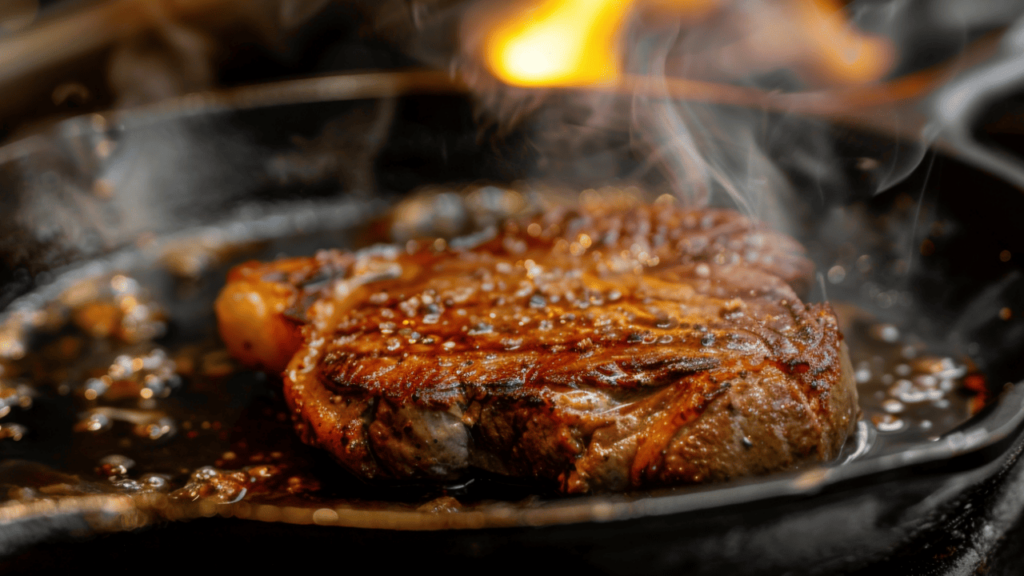When it comes to barbecue, few things are as coveted as the perfect bark—that dark, flavorful crust that forms on the outside of smoked meats. For many BBQ enthusiasts, achieving a thick, delicious bark is the hallmark of great barbecue. But what exactly is bark, and how does it form? Understanding the science behind this savory crust can help you achieve consistent, mouth-watering results every time you fire up the smoker.
The Maillard Reaction: The Building Block of BBQ Bark
At the heart of bark formation is a fascinating chemical process called the Maillard reaction. Named after the French chemist Louis-Camille Maillard, this reaction occurs when heat interacts with amino acids (the building blocks of protein) and reducing sugars, resulting in browning and the development of complex flavors.
For BBQ bark, the Maillard reaction is critical because it creates that deep, caramelized color and robust taste that make the crust so enticing. The key factors influencing this reaction are temperature, time, and the composition of your rub.
- Temperature: The Maillard reaction typically starts around 285°F (140°C). However, the ideal temperature range for BBQ bark formation is between 225°F to 275°F. Cooking “low and slow” allows the reaction to gradually develop, creating layers of flavor without burning the surface.
- Time: The longer the meat cooks, the more time the Maillard reaction has to work its magic. This is why patience is key in BBQ—rushing the process can result in a lackluster bark.
- Sugars in Rubs: Rubs often contain brown sugar or other sweeteners. These sugars caramelize and contribute to both the color and flavor of the bark. However, too much sugar can burn, resulting in a bitter taste, so balance is essential.
The Role of Smoke in Bark Formation
While the Maillard reaction sets the foundation, smoke adds an essential layer of complexity to BBQ bark. When wood is burned, it releases smoke, which is filled with microscopic particles, gases, and volatile compounds. As the smoke passes over the meat, these particles adhere to its surface, contributing to the flavor and texture of the bark.
- Types of Wood: Different woods impart distinct flavors due to their unique chemical compositions. For instance, hickory and oak are known for their strong, hearty flavors, while fruitwoods like apple and cherry add a sweeter, more subtle taste. The choice of wood can significantly impact the final flavor profile of your bark.
- Smoke Adherence: Smoke particles bind with the moisture on the meat’s surface. As the cooking progresses and the meat loses moisture, the smoke particles begin to
- accumulate, creating that distinctive dark crust.

The Impact of Rubs and Seasonings
The composition of your rub is another critical factor in achieving the perfect bark. A well-balanced rub not only enhances the meat’s flavor but also affects the texture and appearance of the bark.
- Salt and Sugar: Salt is a key ingredient in most rubs, and it plays a crucial role in bark formation. It draws moisture out of the meat, which helps create a dry surface that is perfect for smoke adherence. Sugar, as mentioned earlier, helps with browning but must be used judiciously to avoid burning.
- Spices and Herbs: Ingredients like paprika, black pepper, garlic powder, and onion powder add depth to the flavor and contribute to the bark’s texture. Coarser spices can create a textured crust, while finer spices blend more uniformly.
- Moisture Management: As the rub draws moisture to the surface of the meat, it begins to evaporate, allowing the spices and smoke particles to adhere more effectively. The result? A crust that’s both flavorful and crunchy.
Common Mistakes and How to Avoid Them
Even seasoned pitmasters can run into problems when it comes to forming the perfect bark. Here are a few common mistakes to avoid:
- Too Much Rub: Piling on the rub can prevent proper moisture evaporation and lead to a cakey, uneven bark. Instead, apply a moderate layer of rub and press it into the meat gently.
- Inconsistent Temperature: Fluctuating temperatures can cause the bark to form unevenly. Invest in a good quality smoker or grill thermometer to maintain a consistent cooking environment.
- Not Enough Airflow: Airflow is crucial for maintaining a clean burn and adequate smoke adherence. Make sure your smoker’s vents are open enough to allow for proper airflow.
Conclusion
Achieving the perfect BBQ bark is both a science and an art. By understanding the scientific principles behind the Maillard reaction, smoke adherence, and the role of rubs and seasonings, you can take your barbecue game to the next level. Remember to control your temperature, be patient with your cooking time, and apply rubs thoughtfully. The next time you fire up the smoker, you’ll have all the tools you need to create that signature, mouth-watering bark that BBQ lovers crave. For more, you can check out our Meat°it 3 wireless meat thermometer, designed to help you achieve perfect results every time, effortlessly and worry-free.
